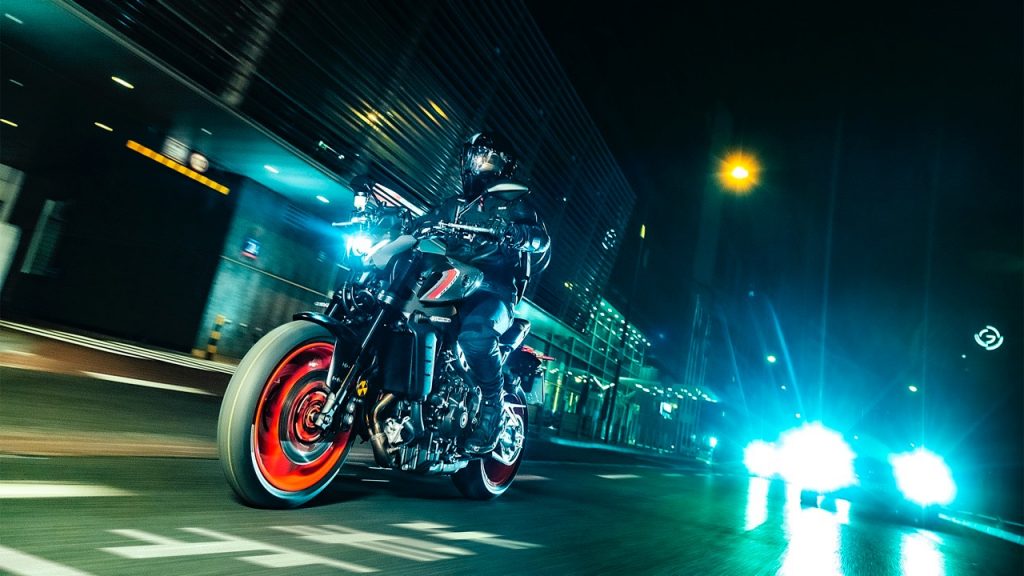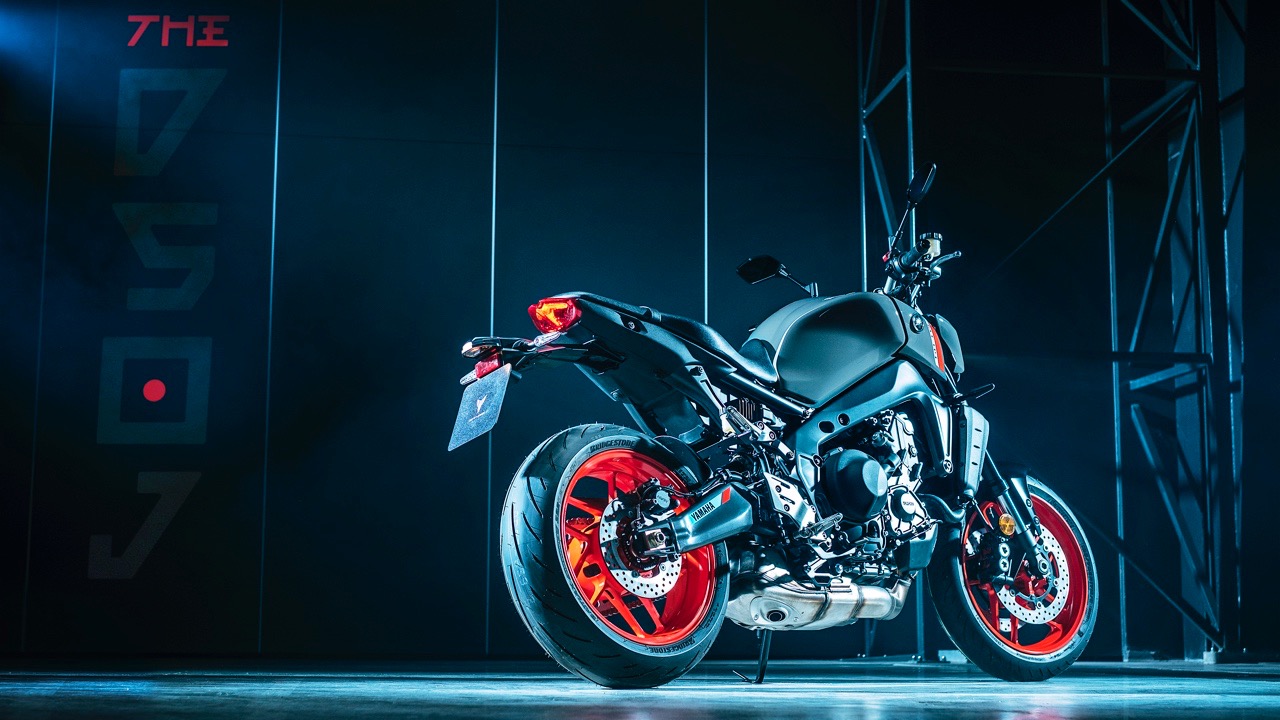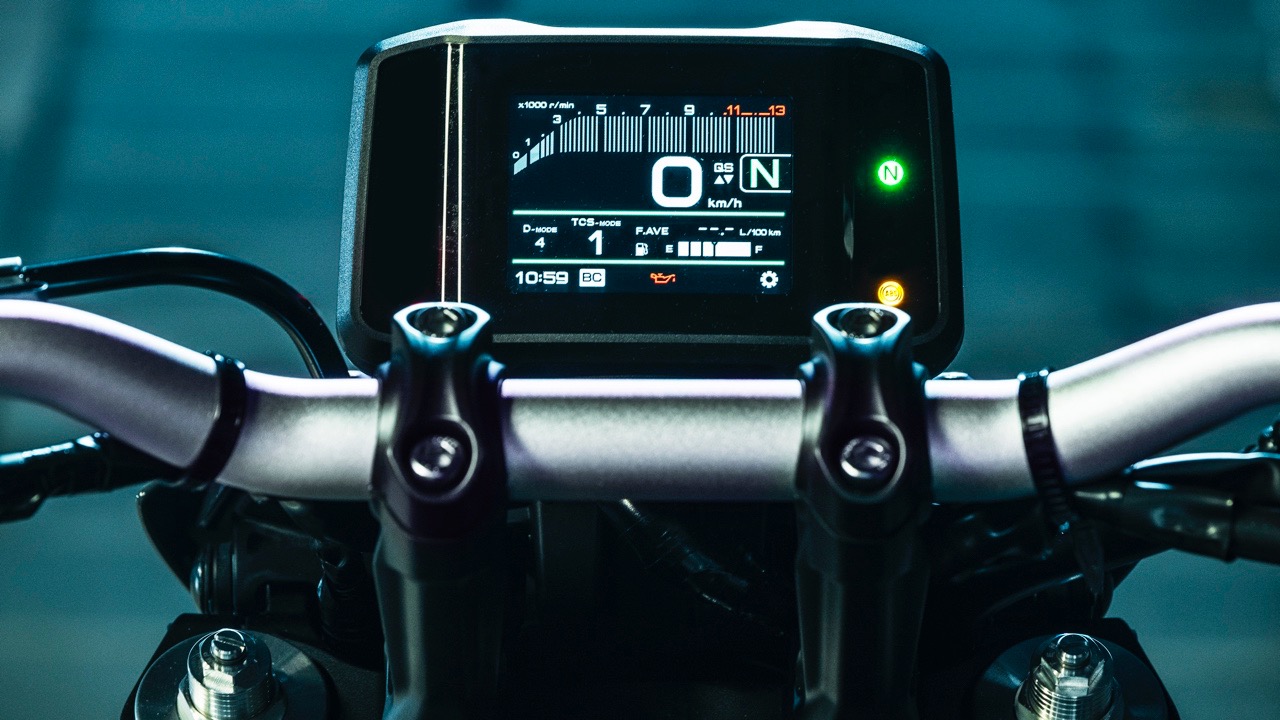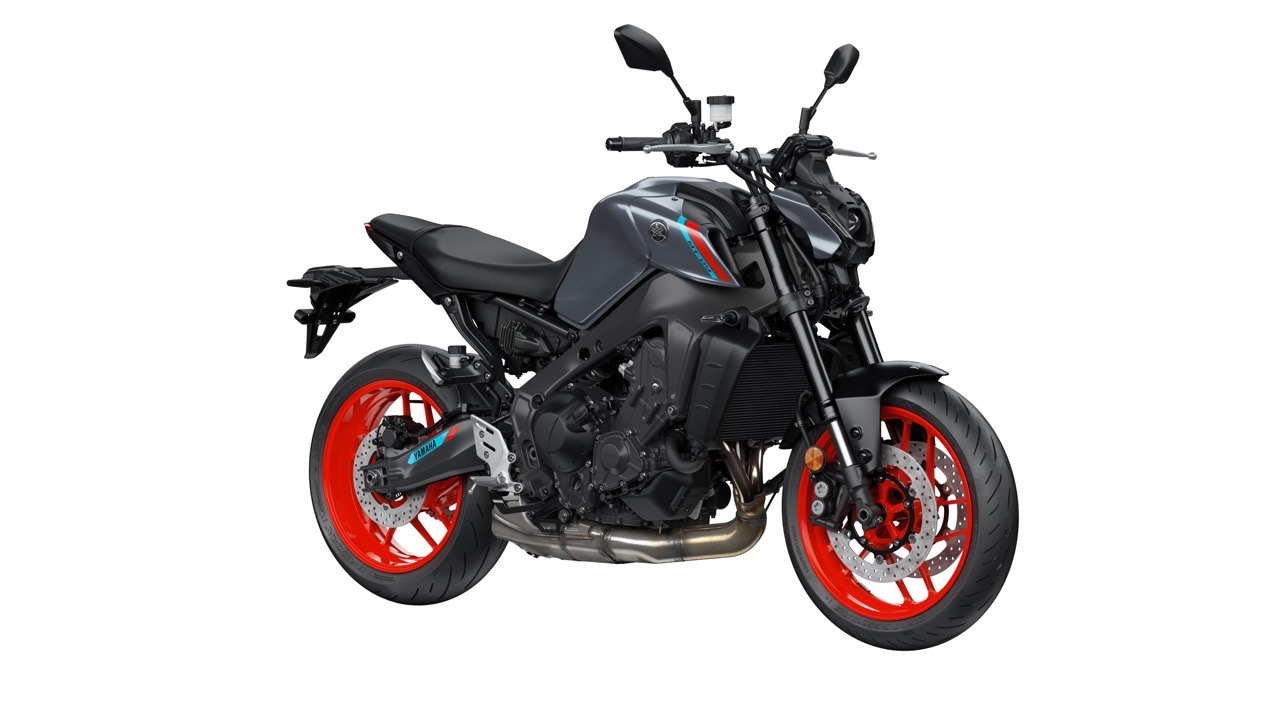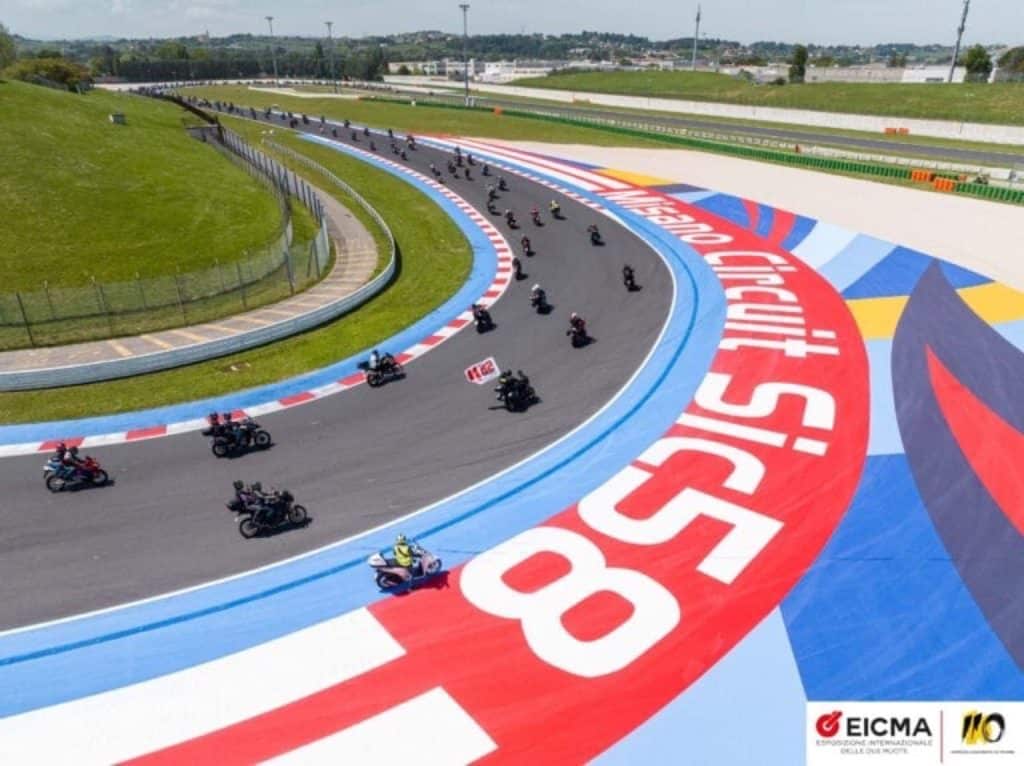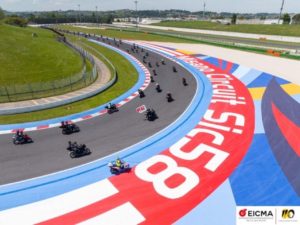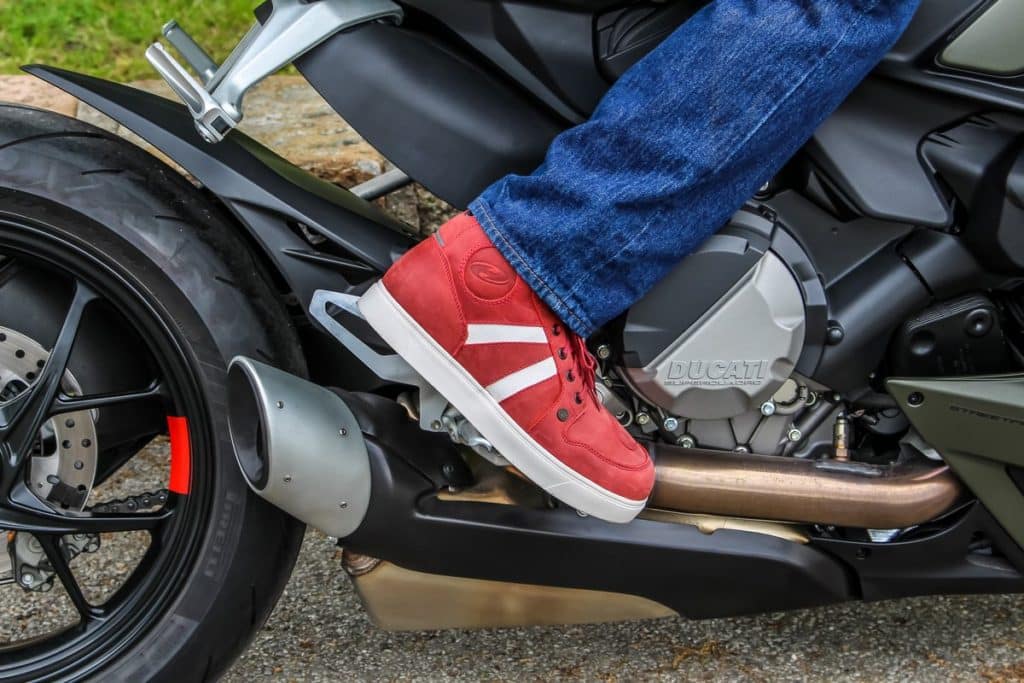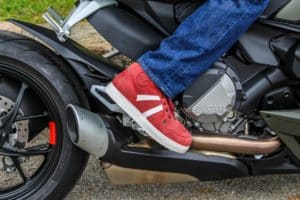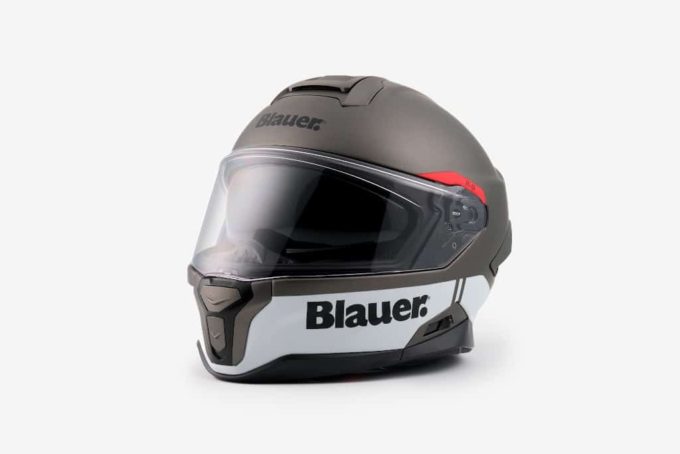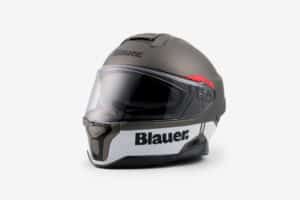Yamaha MT-09: Hyper Naked redefined [PHOTO]
Lower weight and greater thrust
The evolution of the original concept of Yamaha MT-09 it is more technological, lighter and powerful, with a renewed and distinctive design.
Appearance
Essential lines that represent a progressive stylistic change, highlighting the chassis and the mechanical heart. The new MT-09 is offered in chromatic variants Storm Fluo, icon blue e TechBlack. Precisely from the essentiality and the peculiar design “coverless” an innate propensity for dynamism is perceived. The front mudguard is contained and the main headlight minimalist, in a slender and streamlined whole that includes a straight saddle and a pointed tail. A vision also completed by the 10-spoke Spin Forged rims, made using a forging technology that involves heating and high-speed rotation of the cast rims, pressing the edges through rollers to reduce the thickness to just 2 mm, preserving resistance . An aspect that contributes to weight containment, given that the new Spin Forged wheels are 700 grams lighter than the previous ones, containing the gyroscopic inertial moment of the wheels by 11% on the rear wheel, taking up the information.
A minimalist design combined with a low weight, keeping in mind the figure of 189 kg. Four kilos less than the current generation. Also distinctive is the Full LED front light unit of the MT-09 with a single central bifunctional headlight with multiple LEDs that offer a wide and intense beam in the low beam or high beam position. The two LED position lights define the new appearance, giving shape to a Y-shaped motif. Thus the rear light cluster includes a light LED taillight, which again offers a Y-shaped motif. Components such as the fuel tank and seat have been shaped thinking about the different possible motorcyclists and the different sizes and builds.
Technology
Present a new one Deltabox frame lightweight CF die-cast aluminium, developed together with the 889 cc engine. There are two larger crossmembers that run directly from the steering head to the swingarm joint and the new frame, the rear subframe and the aluminum swingarm are 2,3 kg lighter if we evaluate the structure of the previous model. With dynamism in mind, we intervened on the longitudinal, lateral and torsional balance of the chassis, with a 50% increase in lateral rigidity, strengthening straight-line stability. The position of the steerer tube is also lowered by 30 mm.
Among the new features there is also instrumentation TFT da 3,5 inches with a color display, also characterized by a light structure and medium size, in line with the design. The bar tachometer changes color as the required rpm increases and decreases and the display includes, among other information: gear indicator, clock, water and air temperature. The screen is linked to the 6-axis IMU system, being able to switch from one screen to another or the preferred mode for electronic assistance through a remote switch located on the handlebars.
At the front there are new KYB® front forks fully adjustable in preload, compression and rebound with new settings with 41 mm stanchions for progressive fork action and maximum resistance to bending. Then a modified rear progressive link suspension design and a new adjustable KYB® mono with a resized unsprung weight. The new aluminum swingarm with a low mass of 250 grams is distinguishable by a more linear right side and a more symmetrical overall view. The swingarm is located between the frame structure, no longer on the outside of the frame as indicated. This is also the second Yamaha example equipped with the YZF-R1 type braking system with a Nissin radial master cylinder in which the piston moves in a direction parallel to the travel of the brake lever.
Technology
The aforementioned adoption of a solution is highlighted Hi-Tech 6-axis IMU, an example of intelligent electronics in the motorcycle scene. This is the first Hyper Naked Yamaha to adopt this system. The 6-axis IMU of the new MT-09 is 50% smaller and 40% lighter with an intervention on the sensor layout. Through detections, the device can provide real-time data to theECU which deals with electronic assistance systems. They are also indicated Brake Control (BC), Traction Control System (TCS), Slide control system (SCS) then a Control System front wheel lifting control system (LIF). Speaking of Brake Control, it interacts with the ABS and autonomously controls and modulates the front and rear brake pressure, avoiding possible wheel locking during more intense braking, when driving in an upright position and when leaning. The TCS acts to optimize the driving force of the rear wheel during acceleration, three switchable modes are listed and each integrates three of the rider support systems with intervention levels changed simultaneously in modes 1 and 2. Mode 1 offers moderate intervention , mode 2 a significant intervention, finally mode M allows you to choose manual settings. The SCS system manages the thrust when a lateral slip of the rear wheel is expected, supporting the rider in driving. The LIF also assists the rider by making him concentrate on the road by taking care of the engine power and the lifting of the front wheel, making the dynamism during sprinting and acceleration more fluid.
In addition to the possible accessories that can be combined, we also remember the MyGarage app through which you can define an example and the MyRide app relating to driving.
Engine and related solutions
The engine is a CP3 consisting of three cylinders with crossplane technology. A redefined EU5 powertrain with reduced weight. Despite the increased displacement, also considering the new exhaust, the group is 700 g lighter than the current model. Every major component is new.
The displacement reaches now 889 cc with 3 mm more bore and an increased power of four horsepower, reaching i 119 horses at 10.000 rpm. Also interesting is the increase in torque at altitude 93 Nm with peak torque achieved at 7.000 rpm, which is 1.400 rpm lower on the scale.
Among the main aspects of the new engine we also mention the renewed fuel delivery system, injected on the rear part of the intake valve heads. The solution has also been updated Yamaha Chip Controlled Throttle (YCC-T) adding a new throttle grip and position sensor (APSG). Similar to the unit found on the YZF-R1 and R1M, the throttle control system is specific to this naked bike and the ride-by-wire system also replaces the previous model's pulley setup.
There is also a new one Quick shift system (QSS) as well as an optimized A&S clutch by slightly increasing the ratios in first and second gear, with a newly set fork. Considering the increased torque, a new material is used for the friction plates and the cam angle is changed.
Also highlighted is a reconfigured intake system and a new exhaust designed to enhance the performance level of the vehicle. The stainless steel exhaust ducts feature a different curvature and a “no look” design that integrates two symmetrical exhaust ports. A system 1.400 grams lighter than the previous one. The new specially designed intake system features an air filter with an all-new three-channel layout. Each duct has a different section and length, as indicated.
Availability
Deliveries to Yamaha dealers will begin from March 2021.
Photo: Yamaha Motor
if you want to always be updated on our news
Follow us here

